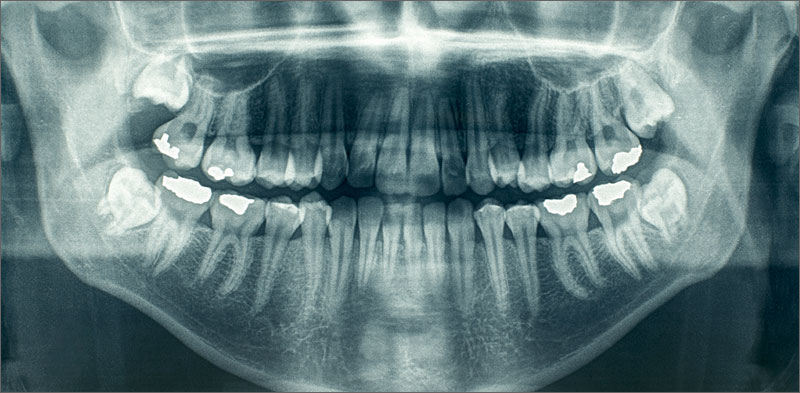Dr. Sonia Sharma

Question: Every time I go for teeth cleaning, my dentist takes a bunch of digital x-rays. Are these really required? Prashant Gandhi, Malton
Dr. Sharma: Often patients get distressed when doctor orders dental x-rays. This is because our understanding and knowledge of the digital x-rays Brampton is limited and in our minds x-rays denotes some thing serious. I personally remember many years ago, while getting an x-ray of my swollen thumb I almost passed out due to the fear of a fracture, resulting pain and uncertainty. Undoubtedly, for most of us x-rays means anxiety and severeness of unknown.
A number of issues come to mind with regards to x-rays. While answering your question, with this article, I will explain the need, frequency, safety and the types of dental x-rays in Brampton. I hope that after reading, you will have a greater consideration and admiration of this important diagnostic tool.
Brampton digital x-ray examinations provide your dentist with an important diagnostic tool that shows the condition of your teeth, their roots, jaw placement, and the overall composition of your facial bones. Digital x-rays can help your dentist determine the presence or degree of periodontal disease, abscesses and many abnormal growths, such as cysts and tumors. X-rays can also show the exact location of impacted and un-erupted teeth. They can pinpoint the location of cavities and other signs of disease that may not be possible to detect through visual examination (such as changes in the jaw bone structure as a result of systemic disease).
If you’re a new patient, your dentist may recommend dental x-rays to check the current status of your mouth and to reveal any hidden problems. A full series of x-rays usually consists of 18 films. A panoramic x-ray, which shows the entire dentition and its supporting structures on a single film, may also be needed. Every six months or so your dentist may take a few films to make sure there are no new cavities developing. But, not all patients need to have X-rays taken every six months. Your radiographic schedule is based on the dentist’s assessment of your individual needs, including whether you’re a new patient or a follow-up patient, child or adult. Cavities progress rapidly; a six-month period is a long time in the development of decay. So, it’s a good idea to visit your dentist every six months.
A number of precautions and advances in x-ray dental equipment have been implemented to help protect you from receiving unnecessary radiation. The amount of radiation received from a dental x-ray exam is extremely low when compared to other naturally occurring sources such as cosmic radiation, minerals in the soil and radon. A complete full-mouth series of films is equivalent to about 19 days of exposure to naturally occurring background (environmental) radiation. Put another way, the ionizing radiation that you receive from one dental x-ray is substantially less than the background radiation you receive every day from just being alive on the planet earth. Doses of radiation are kept at the lowest practical value to minimize your exposure. Also, the areas in your mouth that are being x-rayed are far less dense than other areas of your body; therefore, they require much less radiation to pick up an image than their medical counterparts.
During the imaging process, the rest of your body will be shielded with a lead apron to protect against unnecessary exposure.
Digital radiography is the latest in diagnostic imaging. These systems operate at a fraction of the traditional x-ray exposure levels, yet provide greater image resolution and clarity.
Though, x-rays have been proven to be a minimal risk to pregnant woman and their unborn babies, it’s recommended that their use during pregnancy be limited to cases of emergency.
The two main types of radiographs you’re likely to encounter in a dental office are bitewings and periapicals. Bitewing X-rays are used to detect decay between teeth and changes in bone density caused by gum disease, cysts, abscesses and other systemic conditions. Periapical X-rays are used to visualize root structure, bone levels, and any abnormalities of the structures surrounding the root apices.
A panoramic radiograph allows your dentist to see the entire structure of your mouth in a single image. Within one large film, panoramic X-rays reveal all of your upper and lower teeth and parts of your jaw. Unfortunately, the level of detail is not high enough to accurately diagnose cavities, thus panoramic radiographs should not be substituted for bitewings and periapicals. It’s important to remember that X-rays are not prescribed indiscriminately. Each radiograph provides specific information that is vital to an accurate diagnosis.
So, sit back and relax and remove all your apprehensions about x rays. Your health and well-being ness is paramount to us-your health care providers. We analyze the risk and resulting benefits of all the procedures we undertake while taking care of your smile.
Please remember all information provided is as a general guideline. It is NOT intended to replace professional care. Since every patient and every case may vary, consult your physician or dentist for advice on your particular situation.
Dr. Sonia Sharma Dental Centre
12-3078 Mayfield Road,
Brampton, Ontario, L6Z 0E3
Major Intersection: Mayfield Road/Hwy10 or Hurontario St.
(905) 840-3456
1-877-216-0449
Monday : 9:00 AM - 6:00 PM
Tuesday : 9:00 AM - 6:00 PM
Wednesday : 9:00 AM - 6:00 PM
Thursday : 9:00 AM - 6:00 PM
Friday : 9:00 AM - 6:00 PM
Saturday : 8:30 AM - 4:30 PM
Sunday: By appointment only